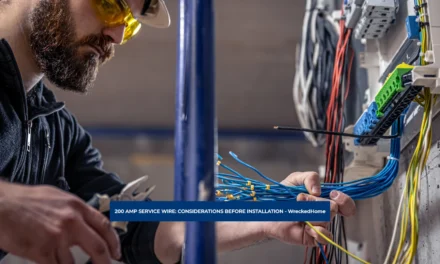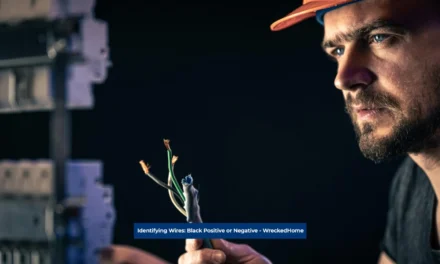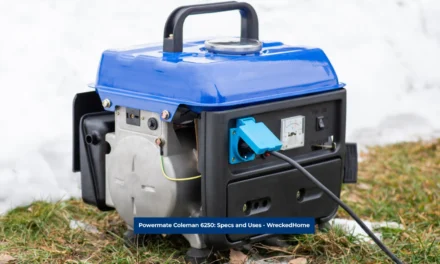In the intricate dance of home heating and cooling systems there is a strong harmony between our comfort and energy efficiency. At its core, thermostat wiring is the nervous system of HVAC setups; that is used to give command for the heating, ventilation, and air conditioning units.
In this dynamic symphony, the importance magnifies when we unravel the complex tapestry of color codes that you can remind by wire codes. Each hue is responsible for a specific function that functions as a conversation between the thermostat and HVAC system.
This understanding not only empowers homeowners to troubleshoot basic issues but also paves the way for the integration of cutting-edge technologies.
The thermostat wiring color code guide for 2023 emerges as a crucial chapter in this fast-paced era of innovation. Let’s uncover the secret of thermostat wiring color code that ensure comfort and efficiency intertwine seamlessly.
Explanation of Thermostat Wiring Components
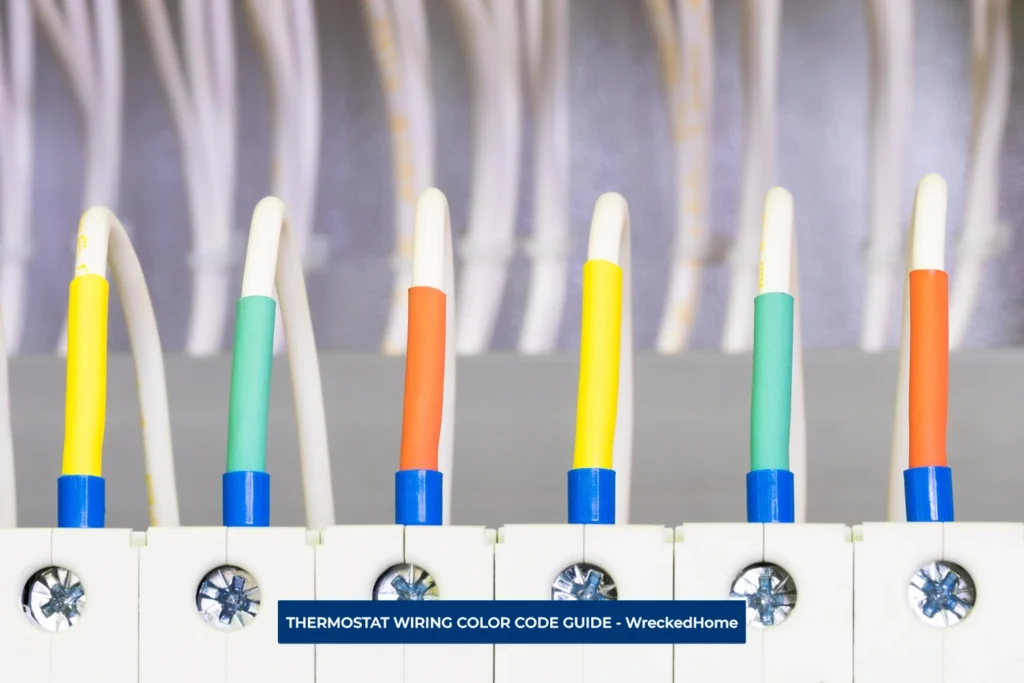
- Thermostat: The thermostat is often regarded as the brains of the HVAC system that can manage your indoor climate effectively. Understanding its components, such as sensors and programmable settings, you can achieve the targeted thermostat wiring dynamics.
- HVAC System: The heating, ventilation, and air conditioning (HVAC) system are key sources that represent the mechanical heart of climate control. Grasping the essentials of its wiring components—like the furnace, air conditioner, and heat pump—give a reliable connectivity and functionality.
B. Importance of Accurate Thermostat Wiring for Efficient Heating and Cooling
In the realm of home comfort, thermostat wiring unveils its direct correlation to the efficiency of heating and cooling systems. If there is any miss step then it can result in loss of energy, inconsistent temperature control that comes as a result of malfunctioning. A harmonious connection between both the thermostat and HVAC system, ensures a comfortable and climate-friendly living environment.
C. Overview of the Thermostat Wiring Color Code System
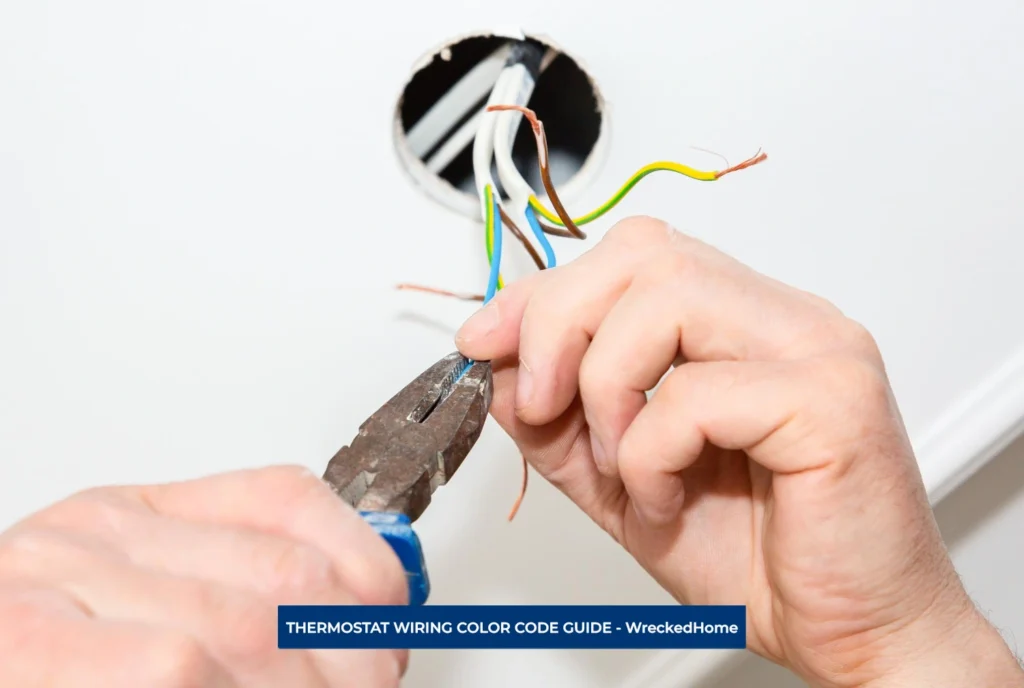
Navigating the labyrinth of thermostat wiring illuminates the color code system. Through it, you can achieve an efficient working result. From the familiar red and blue wires to the less common greens and yellows you can avail the learning opportunity that makes your wiring more effective. The thermostat wiring color code system is a standardized set of colors that ensure consistency and clarity during thermostat installation and maintenance all over the world without new standards.
Visit our store for 10% off our Tools here.
5 Safety Precautions to check Thermostat Wire Color Code
You need to have proper knowledge for correct thermostat wiring color code to ensure the proper functioning and safety of your HVAC system. Here are five safety precautions that you need to follow for wire color codes:
- Power Off the HVAC System: Before delving into the intricacies of thermostat wiring and scrutinizing color codes, you need to follow precautionary measure prevents the risk of electrical shocks. These safety measures ensure safe environment for working with the thermostat components. Always remember to locate and switch off the power source before making adjustment to guarantee a secure and risk-free process.
- Refer to Manufacturer’s Documentation: Consulting the manufacturer’s documentation is paramount when dealing with thermostat wiring color code that can vary on the basis of model. Manufacturers provide detailed guides outlining the correct color codes and wiring configurations to lower the chances of misinterpreting the wiring and causing potential damage. By referring to these documents, users gain a clear understanding of the unique specifications that prevent from any accidental issue by keeping precautions.
- Use a Voltage Tester: You need to use a voltage tester to ensure the safety measure in handling any wires; verify that there is no residual electrical charge. This precaution minimizes the risk of accidental shocks and ensures a safer environment that in return promote a heightened level of safety awareness when working with the intricate wiring of thermostat systems.
- Label Wires Before Disconnecting: To avoid confusion during re-connection, it is advisable to label each one based on its color and corresponding terminal. This systematic approach helps you to avoid errors that could compromise the functionality of the HVAC system. The labeled wires provide a visual guide to a smooth and error-free transition during maintenance and connection building.
- Seek Professional Assistance if Uncertain: If uncertainty arises during the inspection errors in wiring then this malfunctioning can lead to a server risk. Relying on professional guidance ensures a comprehensive solution and secure approach to navigate intricate wiring configurations that can efficiently make your system error free. When in doubt, consulting with professionals becomes a prudent step is a secure approach to thermostat wiring color code inspection.
Thermostat Wire Color Coding
The thermostat wiring color code is important because it is useful in ventilation and air conditioning (HVAC) systems. While variations exist, there is common thermostat wiring color code as follows:
- Red Wire: The red wire, a fundamental component in thermostat wiring, is known as a powerhouse that connects to the R terminal for a 24V power supply. In modern thermostats, it is distinctly labeled as ‘R,’ while in older models, its designation names ‘RC’ in facilitating the flow of power underscores to signify the importance and functionality of the HVAC system.
- White Wire: The white wire finds its purpose in heating systems to make link between the thermostat and the heating component for efficient heating system. Depending on the system’s configuration, thermostat signals a demand for heat that in return activate the heat cycle. Its dedicated role in the heating process underscores the importance of either the W or W1 terminal that keeps the indoor environment more cozy and comfortable.
- Green Wire: The green wire holds a specific role in thermostat wiring that are fixed at G terminal. As the thermostat signals the need for air circulation, then instantly green wire initiate the cooling fan. The green wire’s connection at the G terminal exemplifies dance of thermostat-controlled systems to ensure the energy conversion safely.
- Yellow or Blue Wire: The cooling prowess of the HVAC system is channeled through the yellow or blue wire that makes a connection at the Y terminal. Often identified as Y1, this is a wire that is known as pin in air conditioning set up, that manage skillfully orchestrating the cooling process. In some advanced setups with two-stage compressors, there are terminals that referred as Y2 to initiate the cooling mechanism, contributing to a comfortable indoor climate.
- Black (or Blue) Wire: Known as the C wire or common wire, this 24V connector is a basic element for electrical circuit. Linked to the transformer, the black or blue wire ensures the system’s equilibrium, playing a subtle yet essential role in the symphony of thermostat wiring. By providing a common return path for power, the C wire facilitates stable and continuous operation and functionality of the HVAC setup, contributing to the overall efficiency.
- Orange (or Dark Blue) Wire: The orange (or dark blue) wire holds a specialized role in reverse valve cooling or heating in heat pump systems. This wire establishes a critical connection to the versatility of heat pump operations. The orange or dark blue wire’s unique assignment highlights its importance in facilitating the dynamic control of temperature regulation in both warm and cool environments.
- Light Blue Wire, Brown Wire, and Others: In the realm of 7-wire and 8-wire thermostats, lesser-known wires such as light blue (Y2 for second-stage cooling), brown (W2 for second-stage heating), and those denoted for emergency heat (brown with the letter E) emerge as rare entities. While less common, these wires cater to specific needs in more intricate HVAC setups, showcasing the versatility of thermostat wiring systems. The light blue wire takes on the responsibility of orchestrating second-stage cooling, address unique needs in the thermostat’s repertoire.
By paying keen attention on the wires coding you can avoid from big danger. In this way, you can remind them in a way of code. If you find it difficult then you can consult the table.
Here’s a simple table outlining standard thermostat wiring labels, wire colors, and their functions:
| Label | Wire Color | Function |
| R | Red | 24V Power Supply |
| W or W1 | White | Heating |
| G | Green | Indoor Fan |
| Y or Y1 | Yellow/Blue | Cooling |
| C | Black/Blue | Common (Completes 24V Electrical Circuit) |
| O/B | Orange/Dark Blue | Reversing Valve (Cooling/Heating) |
| Y2 | Light Blue | Second-Stage Cooling (7/8-wire systems) |
| W2 | Brown | Second-Stage Heating (7/8-wire systems) |
| E | Brown | Emergency Heat (7/8-wire systems) |
Conclusion
In the world of HVAC systems, the significance of each wire’s hue is important. In this world, it is most commonly referred to as the thermostat wiring color code. From the omnipresent red orchestrating power to the subtle nuances of white in heating and the versatile dance of yellow or blue in cooling. The intricate language encoded in color guides the conversation as a testament to the evolving symphony of technology and efficiency.
As we navigate the seas of wires and terminals, subtle dance between technology and our desired climate manage architect of indoor climate. It’s a journey that emphasizes not just the technical mastery but also a commitment to a future where home comfort aligns seamlessly with sustainability.
For any repairs, installations, builds, or questions; We recommend you to hire a professional. Find A Pro Near You Here!
FAQs
Is thermostat C wire positive or negative?
The C wire in a thermostat is neither positive nor negative; it is source of neutral charge. That offers whenever necessary for powering advanced features in modern thermostats like Wi-Fi connectivity.
What happens if you wire thermostat wrong?
Incorrect thermostat wiring can lead to risks of electrocution, and potential damage to the thermostat and HVAC systems. Professional assistance is recommended for handling thermostat wiring to eliminate any risk.
Is the C wire neutral?
Yes, the C wire, or common wire, serves as the neutral wire that provides the necessary power for features like Wi-Fi connectivity in modern thermostats. Many older homes may not have a C wire since traditional thermostats that you need to update by searching out.


